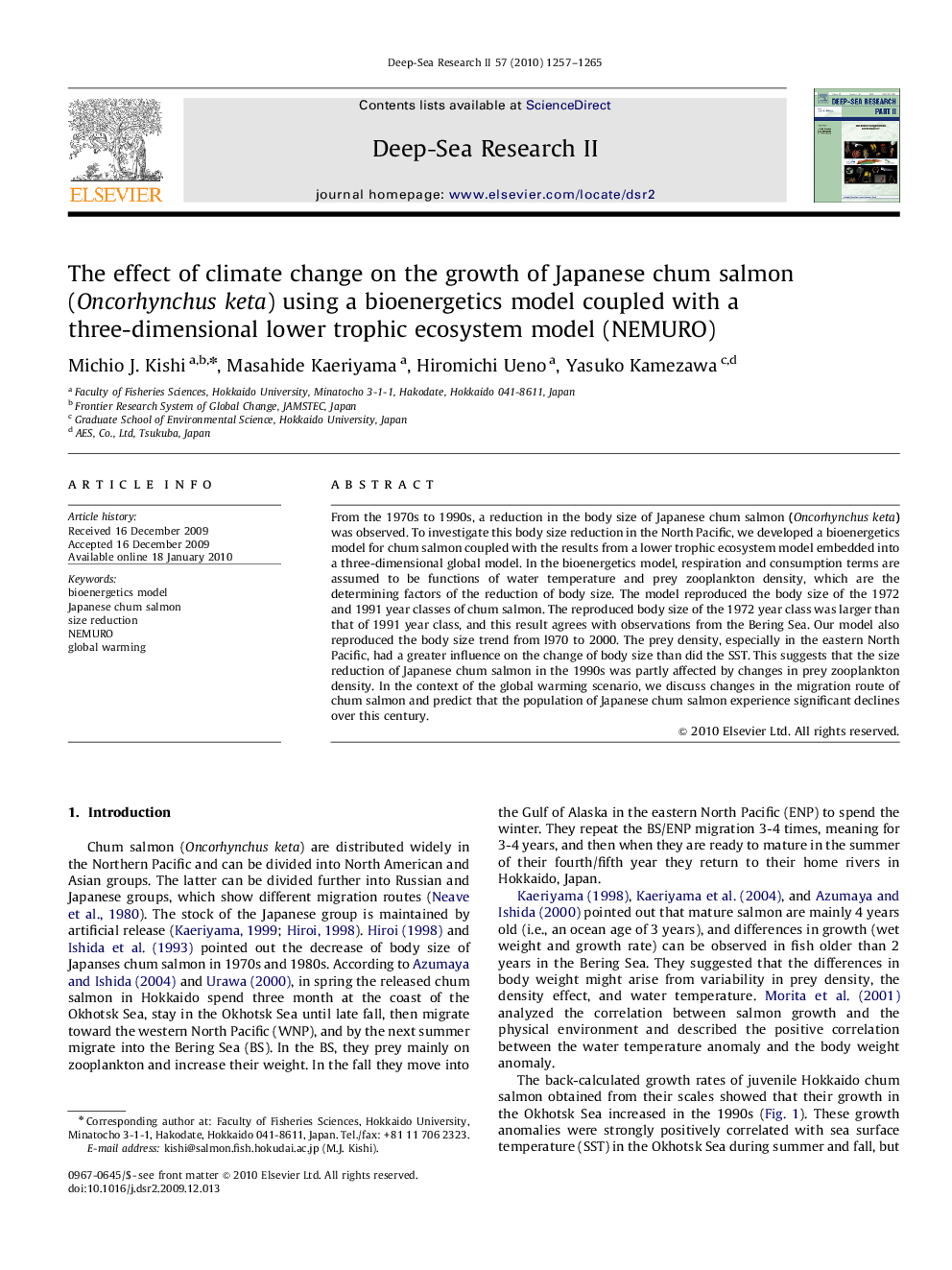| Article ID | Journal | Published Year | Pages | File Type |
|---|---|---|---|---|
| 4537098 | Deep Sea Research Part II: Topical Studies in Oceanography | 2010 | 9 Pages |
Abstract
From the 1970s to 1990s, a reduction in the body size of Japanese chum salmon (Oncorhynchus keta) was observed. To investigate this body size reduction in the North Pacific, we developed a bioenergetics model for chum salmon coupled with the results from a lower trophic ecosystem model embedded into a three-dimensional global model. In the bioenergetics model, respiration and consumption terms are assumed to be functions of water temperature and prey zooplankton density, which are the determining factors of the reduction of body size. The model reproduced the body size of the 1972 and 1991 year classes of chum salmon. The reproduced body size of the 1972 year class was larger than that of 1991 year class, and this result agrees with observations from the Bering Sea. Our model also reproduced the body size trend from l970 to 2000. The prey density, especially in the eastern North Pacific, had a greater influence on the change of body size than did the SST. This suggests that the size reduction of Japanese chum salmon in the 1990s was partly affected by changes in prey zooplankton density. In the context of the global warming scenario, we discuss changes in the migration route of chum salmon and predict that the population of Japanese chum salmon experience significant declines over this century.
Related Topics
Physical Sciences and Engineering
Earth and Planetary Sciences
Geology
Authors
Michio J. Kishi, Masahide Kaeriyama, Hiromichi Ueno, Yasuko Kamezawa,
